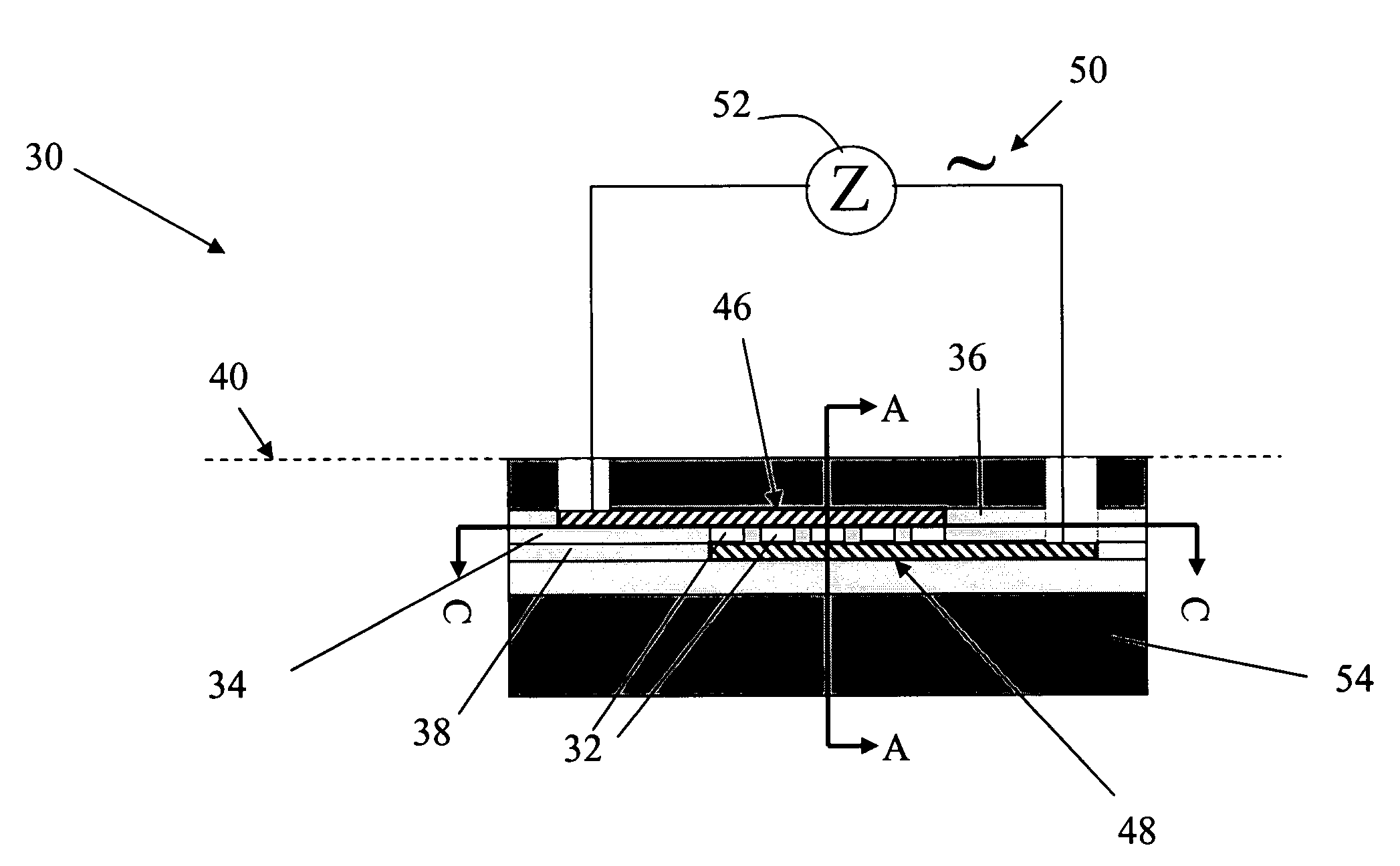Micro sensor for electrochemically monitoring residue in micro channels
- Summary
- Abstract
- Description
- Claims
- Application Information
AI Technical Summary
Benefits of technology
Problems solved by technology
Method used
Image
Examples
Embodiment Construction
[0029]The present invention provides a micro sensor for monitoring the cleaning and drying processes for high aspect ratio micro features in dielectric films during the manufacture of ICs, MEMS and other micro devices. The term “micro feature” is used to refer to both “horizontal” and “vertical” (with respect to the substrate) void micro features such as trenches, vias, holes, pores, etc. These void micro features have aspect ratios of greater than 1:1, typically at least 3:1 and potentially much larger. The micro feature may be filled with a porous dielectric material as well.
[0030]The term “micro channel” is used to refer to the void micro structure formed parallel to the fluid-solid interface that is used to emulate and thus monitor in-situ micro features in semiconductor, MEMS and microfluidic devices. By forming the micro channels substantially parallel to the interface, the channels can be made with much higher and well controlled aspect ratios. The aspect ratio of a micro cha...
PUM
| Property | Measurement | Unit |
|---|---|---|
| Dielectric polarization enthalpy | aaaaa | aaaaa |
| Aspect ratio | aaaaa | aaaaa |
| Electric impedance | aaaaa | aaaaa |
Abstract
Description
Claims
Application Information
 Login to View More
Login to View More - R&D
- Intellectual Property
- Life Sciences
- Materials
- Tech Scout
- Unparalleled Data Quality
- Higher Quality Content
- 60% Fewer Hallucinations
Browse by: Latest US Patents, China's latest patents, Technical Efficacy Thesaurus, Application Domain, Technology Topic, Popular Technical Reports.
© 2025 PatSnap. All rights reserved.Legal|Privacy policy|Modern Slavery Act Transparency Statement|Sitemap|About US| Contact US: help@patsnap.com



